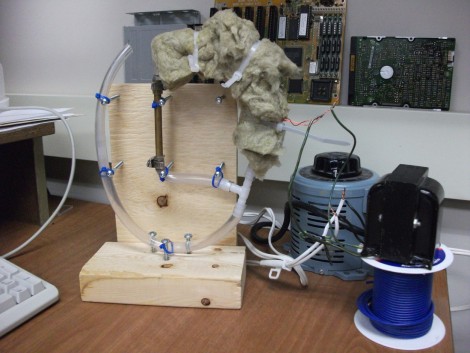G.I. Joe used them to battle Cobra’s evil forces. Han solo shot his first in the Mos Eisley Cantina. For years, hand-held pulse laser guns have been something that existed only in the realm of cartoons and movies…until now.
German hacker [Patrick Priebe] recently constructed a laser pulse gun that looks so good, it could have easily come off a Hollywood movie set. Its sleek white and black exterior adds intrigue, but offers little warning as to how powerful the gun actually is.
Fitted with a Q-switched Nd:YAG laser, it fires off a 1 MW blast of infrared light once the capacitors have fully charged. The duration of the laser pulse is somewhere near 100ns, so he was unable to catch it on camera, but its effects are easily visible in whatever medium he has fired upon. The laser can burst balloons, shoot through plastic, and even blow a hole right through a razor blade.
[Patrick] says that he is more than happy to help out anyone looking to source parts and build one for their own use, so what are you waiting for?
Stick around for a quick demo video of the gun in action.
Continue reading “You’ll Shoot Your Eye Out…with A 1MW Laser Pulse Pistol”

















